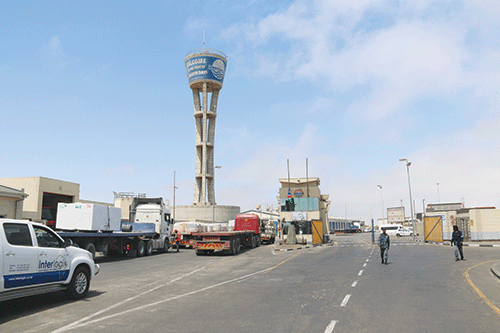The Namibian Ports Authority (Namport) plans to invest N$30 million this year to expand the Walvis Bay Port’s entrance gate to five lanes from the current two lanes.
This, according to a Namport spokesperson, will significantly improve the flow of goods into the world-class harbour, which has already announced key infrastructure expansion that includes new berths and quay walls. These and other developments aim to enhance Namibia’s international trade, and as a result drive regional economic growth.
Namport’s infrastructure focus is in anticipation of increased traffic stemming from recent oil discoveries off the Namibian coast, as well as the country’s green hydrogen ambitions which would entail an increase of energy-based exports such as ammonia.
Meanwhile, Namport is experiencing a notable increase in passenger and cargo vessels. Passenger vessels are increasing as global tourism, including cruise ships, recently recovered to pre-Covid 19 levels.
This factor, coupled with an increase in cargo vessels avoiding conflict in the Red Sea, has quickly resulted in the Port of Walvis Bay becoming one of the busiest African ports.
During the 2022/2023 financial year, Namport recorded an 87% increase in passenger vessel calls, compared to the 2021/2022 financial year.
Also, during the 2023 financial year, vessel calls at the ports of Walvis and Lüderitz increased by 3%, while the gross tonnages of the vessels increased by 15%.
The increase in vessel calls was predominantly driven by increased calls of dry bulk and liquid bulk and petroleum, passenger and patrol vessels.
In addition, bulk and break-bulk volumes increased by 23% due to an increase in market demand for various commodities such as fish and mineral ores.
To support Namport’s expansion, the European Union (EU) last year pledged about N$20 billion to enhance the port’s development. The EU support forms part of the EU-Africa Global Gateway Investment Package, which seeks to boost vital transport corridors, including the Port of Walvis Bay.
“We are strengthening sustainable value chains and strategic transport corridors in Africa, and delivering on the green and digital transitions in both Namibia and the EU. The roadmap adopted today is a tangible follow-up to January’s discussions in Windhoek,” said EU Commissioner for International Partnerships, Jutta Urpilainen, at the time.
One of the key components of the EU support is aimed at transforming the Port of Walvis Bay into a regional logistics and industrial hub for the green hydrogen and derivatives’ economies.


